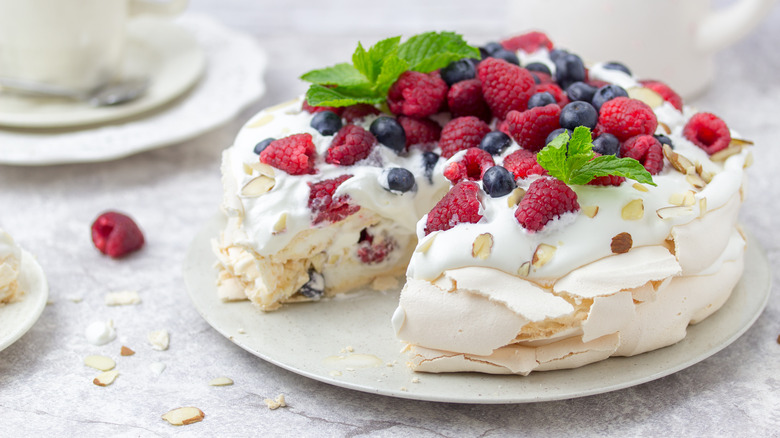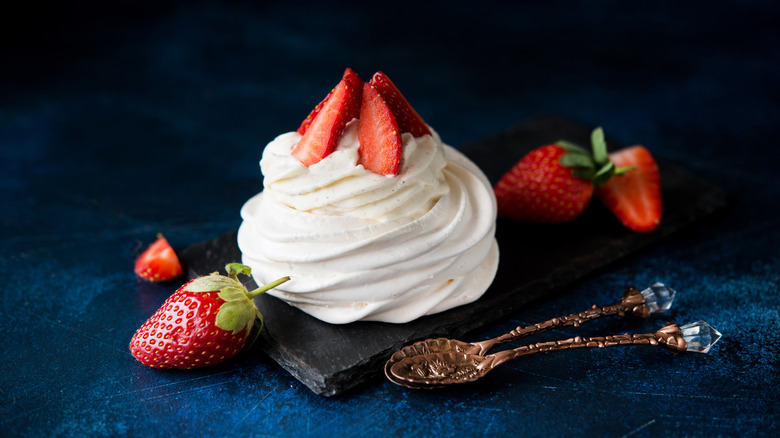The Complicated History Of The Pavlova
When Lillie Rohan sat down to describe Australian slang to the readers of the New Zealand Herald, she couldn't refrain from making a dig at the neighboring country: "They might have stolen the pavlova and hokey pokey from us, but if there's one thing Australians don't seem to want a bar of, it's our Kiwi lingo." The hokey pokey to which Rohan refers is the New Zealander ice cream that consists of "vanilla ice cream with lumps of honeycomb toffee" (per Taste Atlas). More importantly, Rohan opened up a bit of regional controversy that many might not know about.
The controversy in question? Both Australia and New Zealand claim to have invented the pavlova. While an archived copy of the Australian newspaper the Queenslander published a recipe that resembles the pavlova in 1906, they contented themselves with calling it a cream cake. However, the people of New Zealand claim that when the ballerina Anna Pavlova stopped in New Zealand in 1929, the "chef at the Wellington hotel" invented the marshmallowy meringue in her honor (per Culture Trip).
The same piece shared how the Australians claim that the pavlova dish was invented in 1926 at a hotel in Perth, and was named after the ballerina because it was as light as she was. To add to the confusion, The Argus mentioned how an American ice cream was also called a pavlova after Anna Pavlova. So, which story is the right one?
Both may be wrong
While each of the stories about the naming of the pavlova could have some truth to them, the idea that Anna Pavlova's presence inspired a chef to invent an entirely new dessert is unlikely to have much merit. As Queenslander outlined, a squishy meringue dessert is actually not that unique.
In fact, Dr. Andrew Paul Wood, a New Zealander who was determined to prove to his Australian friend that the dessert belonged to his country, told the BBC that his research brought him to a 13th century cookbook from Syria. The book, titled, "Kitab al-Wusla ilà al-Habib fi Wasf al-Tayyibat wa al-Tib" ("Book of the Bond of Friendship in the Description of Good Dishes and Perfumes"), contains a recipe for a dish that's similar to meringues. However, the Syrians poured sugar over the egg whites instead of baking it.
Ultimately, Dr. Wood found a missing link in 18th century Austria, which feasted on Spanische Windtorte (soufflé cake). This was made from meringue, whipped cream, and fruit. So, the idea of combining these ingredients is much older than we originally expected, and it has inspired regional variants like the Eton Mess as well. Will that settle the argument between Australia and New Zealand, though? Only time will tell.

